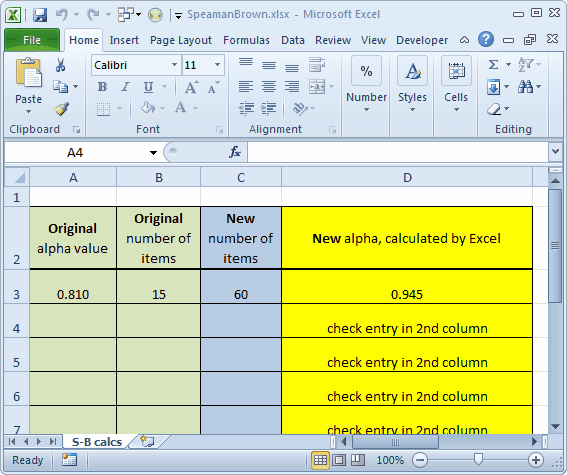Spearman-Brown calculator
The Spearman-Brown "prophecy formula" is applied in some of this site's samples. It's used to estimate how the reliability of a test would change if more items were added to the test. The "test" can be either a cognitive or an affective instrument.
An Excel workbook with this formula built in may be downloaded from here. (Note: in some browsers, you should right-click on this link, and then select the "Save as" option. In other browsers, an ordinary, plain old left-click will start the download. The workbook has been saved with an xlsx extension, ready to work with Excel 2007 or Excel 2010.)

To use this workbook, enter a reliability figure in the first column, such as the alpha coefficient found in Lertap's Stats1f report. This value should be greater than 0.00, and less than 1.00. In the example shown above, we've entered 0.810.
Enter the number of items in the present test (or subtest) in the next column. In the example shown here, the "present" test has 15 items; this number goes into the second (2nd) column, headed "original number of items".
The projected number of items in the "new" test is to be 60 in this example. In other words, what we'd like to know is what the reliability of our test would be were we to add 45 items similar in quality to the original 15, giving us a new, 60-item test.
The workbook will say "check entry in 2nd column" until suitable values are placed in the first and second columns. Then, after an entry is made in the third (3rd) column, the new reliability figure will appear in the yellow column, providing the new number of items is greater than the original number of items. In our example, the new test's reliability would be expected to approximate 0.945.
Search the internet for more about the Spearman-Brown formula (it is widely used). Wikipedia had a workable definition as of May, 2011.
